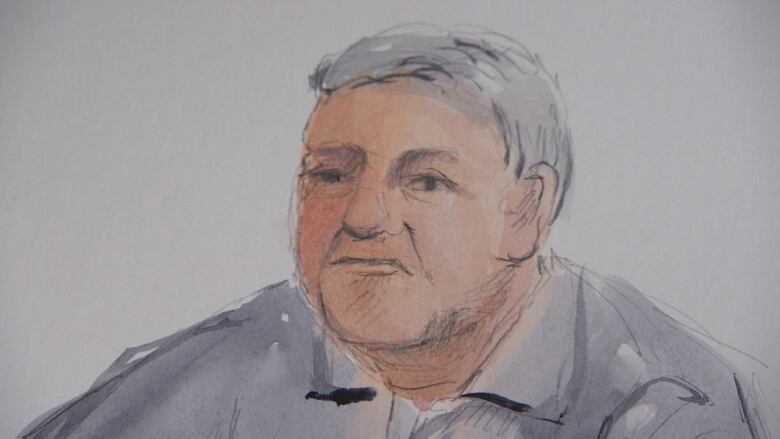Defence questions whether drugs killed Tina Fontaine but toxicologist says it's unlikely
Toxicologist also asked about the presence of gabapentin, a drug designed to treat epilepsy

Read our live coverage of the trial here.
The defence lawyer for Raymond Cormieron Tuesday asked a toxicologist who examined the body of Tina Fontaine about whether drugs and alcohol could've led to the 15-year-old Indigenous girl's death.
RaymondCormier, 55, has pleaded not guilty to a second-degree murder charge in the death ofFontaine, whose body was found on Aug. 17, 2014, near the river's shore north of the Alexander Docks in Winnipeg.
Fontaine's death sparked several community-level movements aimed at solving missing persons cold cases and preventing similar deaths. It also ignited calls for a national inquiry into missing and murdered Indigenous women and girls.
On Tuesday, court heard from ChristopherKeddy, a toxicologist with theRCMPnational lab, aboutsamples of chest-cavity fluid taken fromFontainethat he saidshowed the teenager had a blood alcohol level of 0.099, just over the legal limit, and a significant amount of THC, the active ingredient in marijuana,in her system.
ButKeddyexplained that because of decay,post-mortemdistribution the movement of drugs between tissues, organs and body fluids after death and the tests being done on chest-cavity fluid instead of blood, he couldn't say if the amount of the drugs was lower or higher at the time of her death.
Keddy said there was no indication of crystal meth and the presence of cocaine could not be confirmed in the samples. He added the combination of drugs and alcohol was unlikely to be fatal.
The toxicologist was also asked about the presence of gabapentin, a drug designed to treat epilepsy, which is sometimes used recreationally to treat pain or get a slight euphoric high like marijuana.
Defence lawyer Andrew Synyshyn asked the toxicologist whether he could rule out that the combination of gabapentin, alcohol and marijuana could be lethal. Keddy responded that he could not.
But Keddy saidthe presence of gabapentin, also called gabby, wouldn't be picked up by the RCMP tests. It would have to be present in high and "potentially toxic" levels in order to be detected, he added.
Ross told court that on Aug. 8, 2014, Fontaine had gone to the Health Sciences Centre and told a nurse she had taken gabapentin.

Keddy noted that he did not test the samples himself;a colleague who is no longer with the RCMP labdid, but he interpreted the results.
Earlier in the day, MS River Rouge riverboat captain Alexander Cunningham told court that he was on his boat soon after Fontaine's body was found. MS River Rouge is a boat that is used for tours of Winnipeg's river system.
The boat had travelled along the river from Selkirk, Man., and stopped at the Alexander Docks on Friday night or Saturday morning, Cunningham said. Fontaine's body was discovered on Sunday.
While the boat's log book had been lost, Cunningham said he was certain the boat brought people out onto the water for a cruise on Saturday night.
Cunningham was shown pictures from the area around the docks on Sunday whenFontaine's body was found and the captain pointed to theRiver Rouge docked in the images. He added that the boat was late getting in the river in 2014 because of high water levels and that weekend was the first time they'd been on the water that season.
Cunningham told court that when the boat approached the dock, he would reverse the propellers to stop. In the past, he said the process has brought debris and other human bodies to the surface of the water because it causes "lots of turbulence."

He also told court that the Alexander Docks were extremely dark in 2014 and the only light came from the boats. Occasionally vehicles would drive on the dock or park in the darkness of the nearby shore, he added.
"[People] come down to drink or smoke or neck. I don't know," he said.
During cross-examination, defence lawyer Synyshyn asked the boat captain whether he watched the shore for debris. Cunningham said he didn't see anything because his concern was what is ahead of him, not what's on the shore.
"There is no reason for me to look for debris around the boat," he said.
Fontaine, at 5-foot-3 and 77 pounds, was weighted down by 11 kilos of rocks when her body was dumped in the river, court heard on Monday.

Her body was discovered by a man and his son looking for a place to fish by the Alexander Docks on Aug. 17, 2014. They spotted it near shore, wrapped in a blanket.
The Crown told court on Monday that Fontaine was wrapped in a type of duvet cover that was sold to only 100 customers in Winnipeg prior to the teen's death and they believe Cormier owned one of them.
The Crown told jurors on Monday that they will hear audio recordings of Cormier allegedly saying he hoped to sleep with Fontaine and becoming angry when he found out she was 15.
On Monday, the first day of what stands to be a five-week-long trial, Crown attorneys James Ross and Breta Passler told the eight women and four men on the jury that though there isn't any DNA or forensic evidence linking Cormier to her death, but they intend to show he had the means and motive to kill Fontaine.
With files from Bryce Hoye












_(720p).jpg)


 OFFICIAL HD MUSIC VIDEO.jpg)
.jpg)



























































































